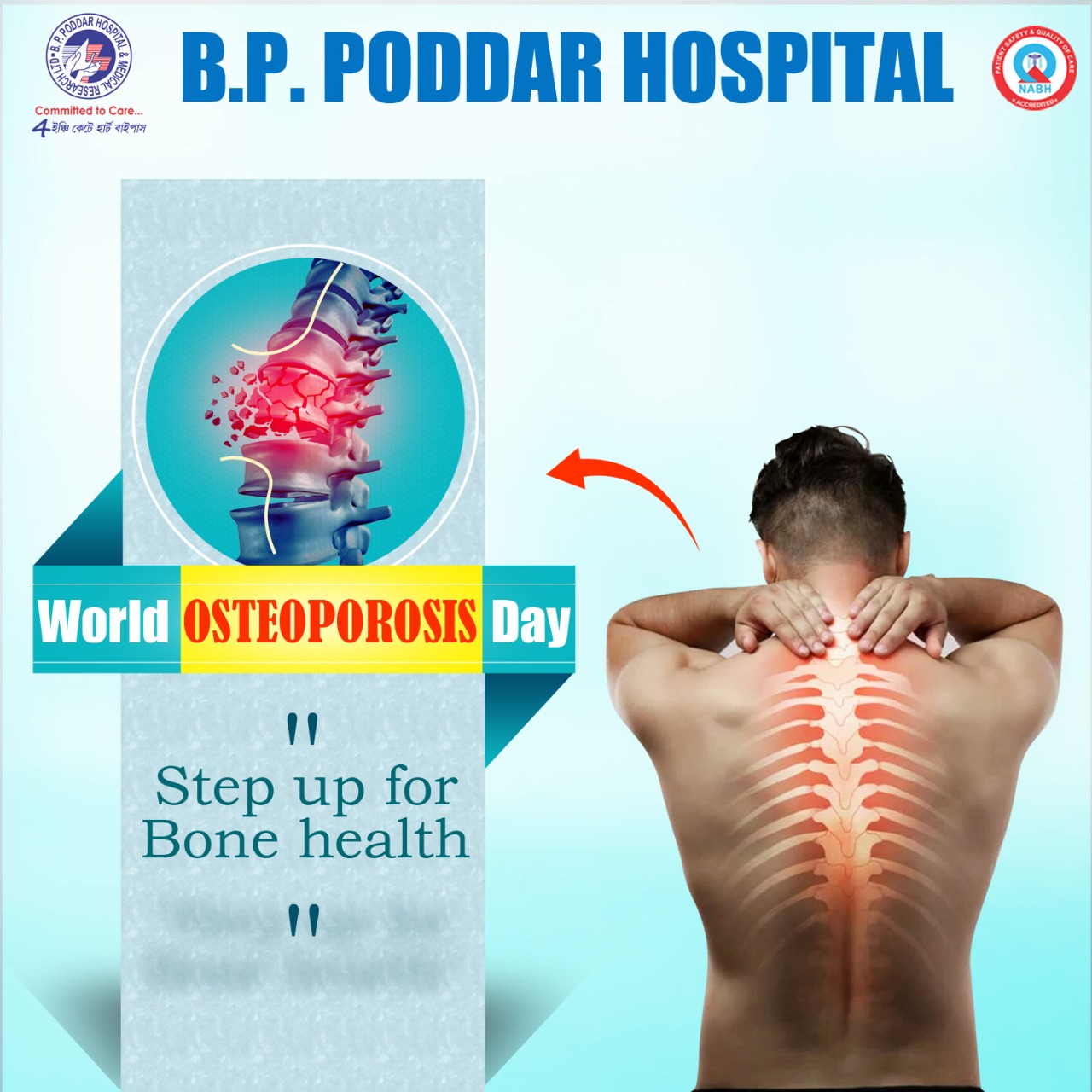- Emergency Admission : +91-8585035846
- Email :feedback@bppoddarhospital.net

Osteoporosis literally means "porous bone." Since the condition weakens bones and increases the chance of sudden, unforeseen bone fractures. If a person has osteoporosis then the bones become weaker and light in mass. The condition frequently progresses without any warning signs or discomfort and it is typically not detected until the weakening of bones result in fractures. The majority of these involve hip, wrist, and spine fractures.
World Osteoporosis Day proposes educating people about osteoporosis and its effects which relies on five steps to osteoporosis prevention. The first step is to eat meals that are rich in calcium, vitamins, proteins, and other nutrients, maintaining body weight by engaging in at least 40 minutes of exercise daily and by avoiding excessive alcohol consumption and smoking. It also creates awareness of elements such as illnesses, genetics, medications, and menopause which are the factors for osteoporosis.
Causes
The exact cause of osteoporosis is unknown as it develops inside the living, expanding tissue which makes up the bones. Trabecular bone, which constitutes the inside of healthy bones, resembles a sponge. The cortical bone, a spongy bone, is encased in a tough outer layer of bone. Osteoporosis weakens the inside of the bone by causing the "holes" in the "sponge" to enlarge and multiply. The body breaks down and rebuilds the bone when it requires calcium. This procedure is known as bone remodeling which maintains the strength of the bones while supplying the body with the calcium it requires. After age 35, bone deterioration outpaces bone formation, resulting in a steady decrease of bone mass which usually increases after menopause.
Symptoms
Osteoporosis typically shows no symptoms. Thus it is sometimes also referred as ‘silent sickness’ for this reason. However, the following symptoms are observed:
Risk factors
Diagnosis
Treatment
The goals of osteoporosis treatment include managing pain, reducing joint deterioration, and enhancing or maintaining function and quality of life. This can be accomplished while also protecting joints from future harm by supplementing a variety of drugs and lifestyle choices.